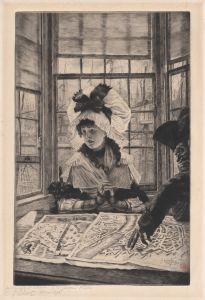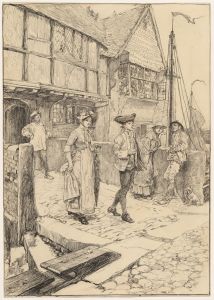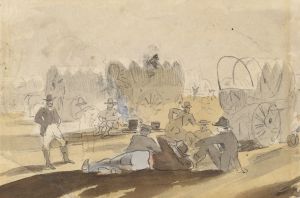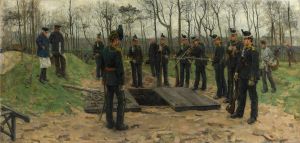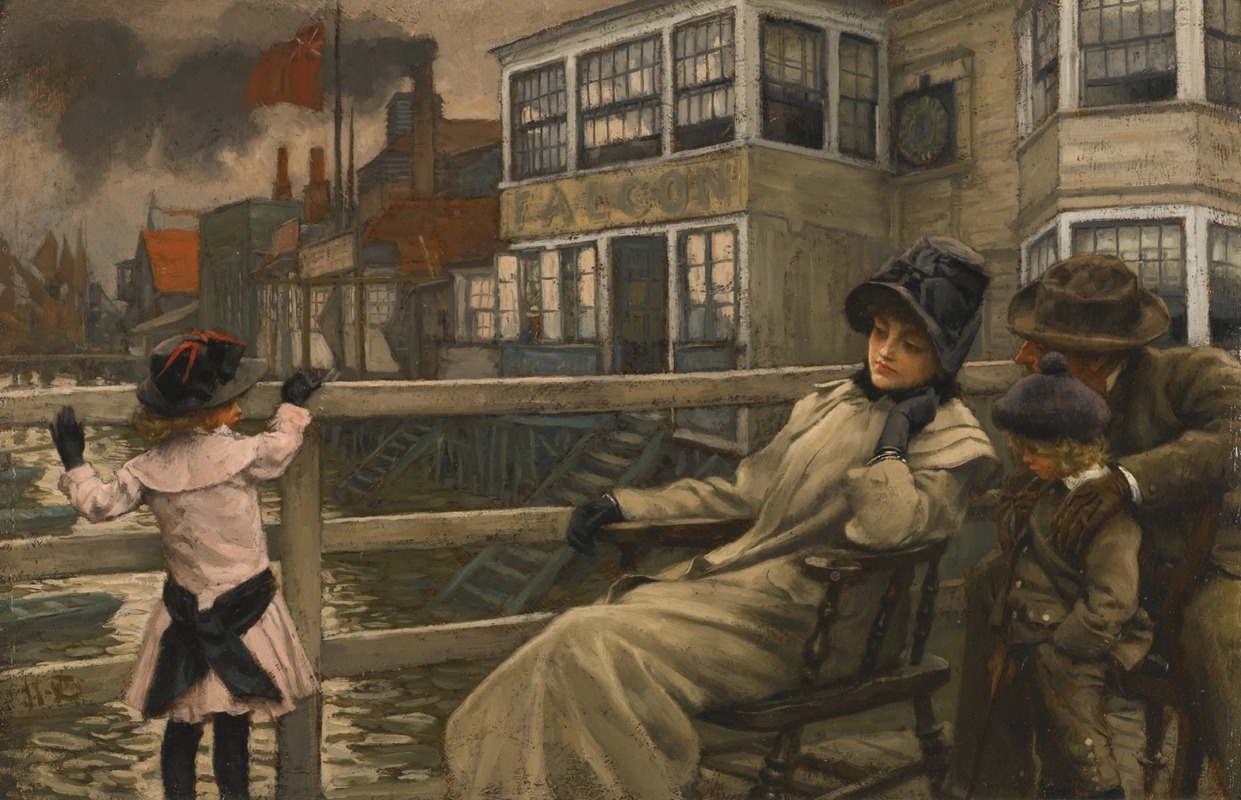
Waiting for the ferry
A hand-painted replica of James Tissot’s masterpiece Waiting for the ferry, meticulously crafted by professional artists to capture the true essence of the original. Each piece is created with museum-quality canvas and rare mineral pigments, carefully painted by experienced artists with delicate brushstrokes and rich, layered colors to perfectly recreate the texture of the original artwork. Unlike machine-printed reproductions, this hand-painted version brings the painting to life, infused with the artist’s emotions and skill in every stroke. Whether for personal collection or home decoration, it instantly elevates the artistic atmosphere of any space.
"Waiting for the Ferry" is a painting by the French artist James Tissot, created in 1878. Tissot, born Jacques Joseph Tissot in 1836 in Nantes, France, was known for his detailed and often narrative-driven paintings that captured the social mores and fashions of his time. He spent a significant part of his career in England, where he became a prominent figure in the art scene.
The painting "Waiting for the Ferry" exemplifies Tissot's keen eye for detail and his ability to capture the nuances of contemporary life. It depicts a group of elegantly dressed individuals waiting by a riverbank, presumably for a ferry to arrive. The scene is set in a serene outdoor environment, with lush greenery and calm waters providing a picturesque backdrop. The figures in the painting are dressed in the height of late 19th-century fashion, showcasing Tissot's interest in the attire and social customs of his era.
Tissot's work is often characterized by its meticulous attention to detail, and "Waiting for the Ferry" is no exception. The artist's use of color and light adds depth to the scene, creating a sense of realism that invites viewers to step into the world he has depicted. The composition is carefully arranged, with the figures positioned in a way that suggests interaction and narrative, a common feature in Tissot's paintings.
During the time Tissot painted "Waiting for the Ferry," he was living in London, having moved there in 1871 following the turmoil of the Franco-Prussian War and the Paris Commune. His work during this period often focused on the leisure activities and social gatherings of the British upper class, and this painting is a reflection of that interest. Tissot's ability to capture the subtleties of human interaction and the elegance of his subjects made his work highly popular among the Victorian elite.
"Waiting for the Ferry" is also notable for its technical execution. Tissot was known for his use of photography as a tool in his artistic process, which allowed him to achieve a high level of precision in his compositions. This technique is evident in the lifelike quality of the figures and the detailed rendering of their clothing and surroundings.
Today, James Tissot is recognized as a master of genre painting, and his works continue to be celebrated for their beauty and historical significance. "Waiting for the Ferry" remains an excellent example of his skill in capturing the essence of a moment, offering viewers a glimpse into the world of 19th-century society through the eyes of one of its keenest observers.







